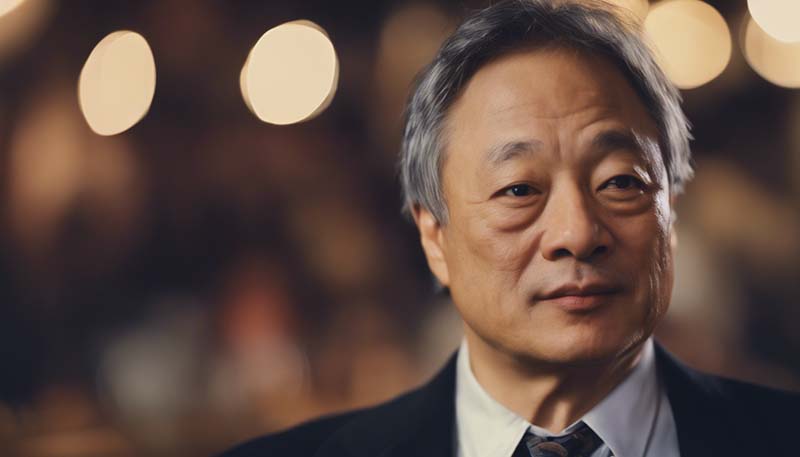The Emotional Depth of Ang Lee: A Study of His Film Style
Ang Lee is a renowned filmmaker whose work has consistently demonstrated a profound understanding of human emotion and its complex interplay with societal norms, cultural identity, and personal relationships. This paper aims to explore the emotional depth of Ang Lee\'s film style through an analysis of his most celebrated films, including \"Crouching Tiger, Hidden Dragon,\" \"Sense and Sensibility,\" \"Brokeback Mountain,\" and \"Life of Pi.\"
**Chapter 1: The Language of Cinema and Emotional Expression**
- This section will discuss how Lee uses cinematography, color, and music to convey emotional states and character development.
- The use of long takes and close-ups to immerse the audience in the emotional journey of characters.
**Chapter 2: The Role of Cultural Context in Emotional Narratives**
- An exploration of how Lee\'s films explore cultural tensions and how these contribute to the emotional arcs of his characters.
- The significance of traditional and modern values in \"The Wedding Banquet\" and \"Eat Drink Man Woman.\"
Advertisement
**Chapter 3: The Dynamics of Love and Relationships**
- A detailed look at the portrayal of love in Lee\'s films, from romantic love in \"Sense and Sensibility\" to forbidden love in \"Brokeback Mountain.\"
- The use of contrast between internal and external worlds to highlight the emotional struggles of characters.
**Chapter 4: The Exploration of Identity and Emotion**
- This chapter will examine how questions of identity are central to the emotional journeys in films like \"Lust, Caution\" and \"The Ice Storm.\"
- The interplay between personal identity and societal expectations as a source of emotional conflict.
**Chapter 5: The Use of Symbolism and Metaphor**
- An analysis of how Lee employs symbolism and metaphor to add layers of emotional depth to his narratives.
- Examples from \"Crouching Tiger, Hidden Dragon\" and \"Life of Pi\" to illustrate the use of symbolism in expressing themes of longing and self-discovery.
**Chapter 6: The Emotional Impact of Adaptation**
- A discussion on Lee\'s skillful adaptation of literary works for the screen, and how this process enhances the emotional resonance of his films.
- The translation of Jane Austen\'s prose into the emotional language of cinema in \"Sense and Sensibility.\"
**Conclusion**
- A summary of the key findings on the emotional depth of Ang Lee\'s film style.
- An overview of Lee\'s unique ability to connect with audiences on an emotional level through his films.
**References**
- A comprehensive list of references, including scholarly articles, film critiques, and interviews with Ang Lee.
---
**Sample Content:**
**Introduction (Continued)**
Ang Lee\'s films are not mere visual narratives; they are intricate tapestries of emotion, woven through the characters\' struggles, desires, and transformations. His directing style often involves a delicate balance between the explicit and the implicit, inviting viewers to engage with the story on a deeper, more personal level.
**Chapter 1: The Language of Cinema and Emotional Expression (Excerpt)**
Cinematography in Lee\'s films is not just a tool for storytelling; it is a conduit for emotional expression. In \"Crouching Tiger, Hidden Dragon,\" the fluid and dynamic camera work captures the elegance and intensity of the martial arts sequences, while also serving as a visual metaphor for the characters\' internal battles. The use of color, particularly in the film\'s night scenes, creates an ethereal and dreamlike atmosphere that complements the characters\' spiritual journeys.

**Chapter 2: The Role of Cultural Context in Emotional Narratives (Excerpt)**
Lee\'s \"The Wedding Banquet\" is a prime example of how cultural context can deepen emotional narratives. The film explores the clash between traditional Chinese values and modern Western sensibilities, with the emotional turmoil of the characters arising from the conflict between their cultural identities and personal desires. The wedding banquet itself becomes a stage where the characters negotiate their emotional truths within the constraints of cultural expectations.
**Conclusion (Excerpt)**
In conclusion, Ang Lee\'s filmography is marked by a profound exploration of the emotional spectrum of human experience. His films are characterized by a nuanced approach to character development, where emotional depth is achieved through a careful interplay of visual storytelling, cultural context, and thematic complexity. Lee\'s work invites viewers to reflect on their own emotional journeys, making his films not just a source of entertainment but also a medium for introspection and emotional catharsis.